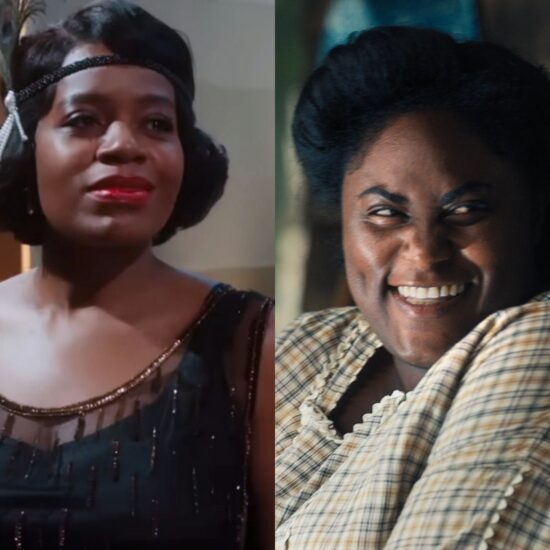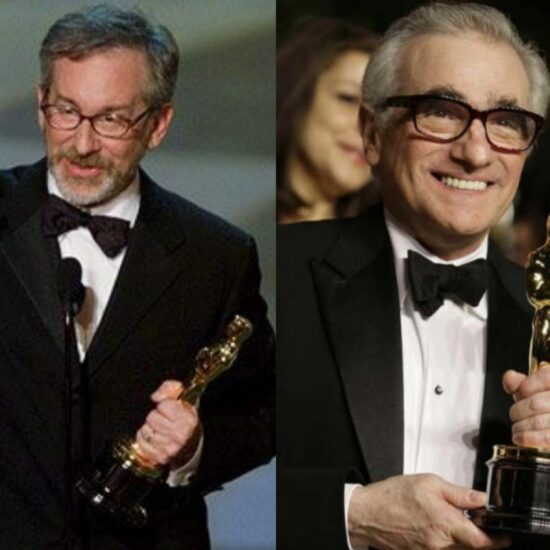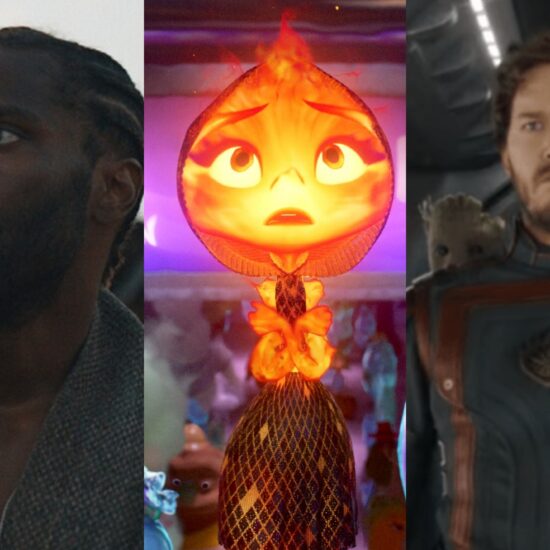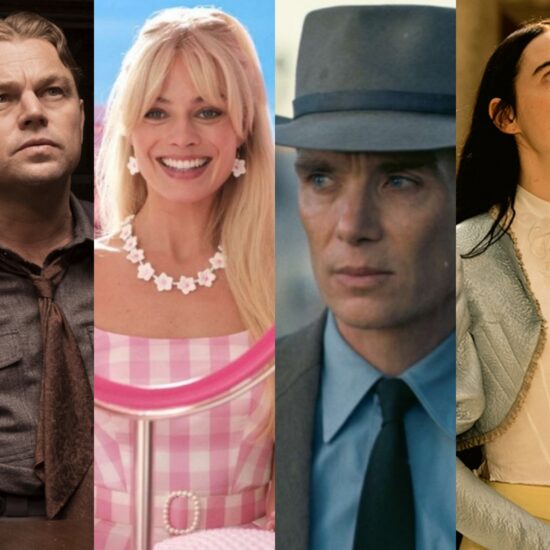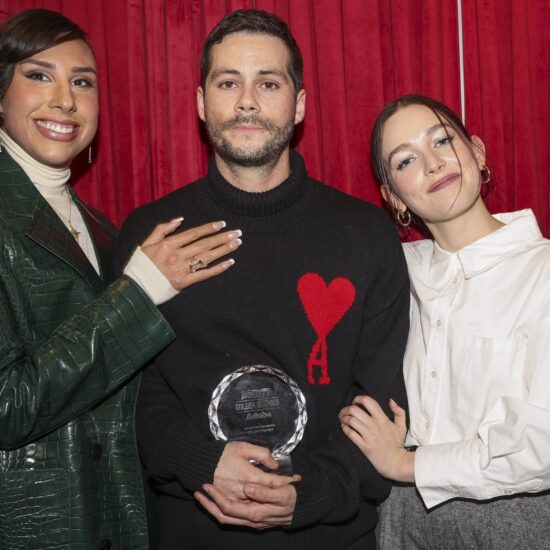
Somehow, “Chicago,” Rob Marshall’s Oscar-winning musical, has just turned 20.
Based on the 1975 musical of the same name (which itself originated in a play from 1926), “Chicago” was a critical and commercial smash, making more than $300 million worldwide and winning six Oscars, including Best Picture and Best Supporting Actress for Catherine Zeta-Jones. (Even more impressive: the last time a musical had won an Oscar for Best Picture was back in 1968 for “Oliver!”)
Looking back on the movie, it’s perhaps most surprising to remember that it was director Rob Marshall’s first film. Marshall was already a staple in theater, but with “Chicago” he established himself as a truly excellent filmmaker too. He would go on to direct films like “Into the Woods,” “Pirates of the Caribbean: On Stranger Tides,” “Mary Poppins Returns” and the upcoming live-action version of Disney’s “The Little Mermaid.”
TheWrap spoke to Marshall about “Chicago” on the occasion of its anniversary (and the new deluxe steel book Blu-ray that has just come out). Marshall discussed what it was like making his first movie, where the idea to have the musical numbers in the characters’ heads came from and whether or not Harvey Weinstein, among other things a notorious meddler in his directors’ films, messed with the final cut or not.
It’s amazing that “Chicago” was your first movie. How intimidated were you?
Well, you know what, I probably should have been more intimidated, but I was blissfully naive. I had done one other television musical, “Annie” – the one with Kathy Bates and Victor Garber, Audra McDonald, Kristin Chenoweth, and Alan Cumming. That was the first time I ever called action and cut. I’d never directed anything on film besides that, but it was a mini-version of doing a movie. In every way it felt like a movie, the schedule was shorter, of course, but we were shooting on film. And I really had that experience. I felt like I had that a chance to actually do that and edit something like that and put it together and film and create that.
So when I started this film, which was my first feature film, I felt very at home. What’s funny, because I came from theater, I realized in later years that anytime I would ever do something in theater, if I were choreographing a number, I would always imagine what it would be like on film. And then I would translate it to the stage. But I always imagined film. When I started working on film, it was actually in some ways easier because it’s how I didn’t have to then translate it to stage. I just could film it from what I was thinking.
But I was excited about it. We were all nervous, in a way. Richard Gere, Catherine Zeta Jones, Renée Zellweger, Queen Latifah, we were all new to film musicals. At that point live-action movie musicals were not being made. Animated ones, people were accepting that. But they were dead in the water. No one really wanted to see them. They thought it was weird for people to sing. But I think because this conceptual idea that was created by myself and Bill Condon to have it all living in two different worlds, the world of her imagination on the vaudeville stage, helped me bridge that. And I was, like I said, blissfully naive and just focused on telling the story.
I was going to ask about that conceit the musical numbers happening in their minds. And did you shoot any coverage in case that didn’t work? Or was everybody on board?
Such a good question. I mean, that’s how I pitched the idea to Miramax when I got the job. I said, “I see this happening in two realities.” The original stage piece is built as a musical vaudeville. All the numbers are presentational, every one of them. And they need to remain that way. They’re all built based on classic vaudeville turns. So “Mister Cellophane” is Bert Williams, or “When You’re Good to Mama” is Sophie Tucker. They were all built as these presentational musical numbers. It was really important to hold onto that idea. And then I said, “But I would like to tell the real story simultaneously.” And I remember having to say things like, “You know like in MTV” – this is how long ago it was – “where you can have two different realities happening,” trying to picture it, because it was something that hadn’t really happened before.
And then Bill Condon came on and we came up with this idea of seeing it through Roxie’s eyes, these two worlds. How would we enter that world of vaudeville? And we created that together. I felt like it was the only way to make this piece work. But I will say, not until I was in that editing room… I mean, I was sweating bullets because I thought, Is this going to work? Are people going to go with this? Are they going to understand that we can tell two stories simultaneously? Because I mean, I didn’t have a lot of coverage. It wouldn’t have worked. It was really built as a concept film musical and that concept needed to really work.
The movie has a very distinct rhythm, both in the musical sequences and in the scenes that lead up to them. Was that something that you had in mind or discovered during the edit?
Thank you for asking that. I was so nervous about making it work that it was built into the script. Because I knew I had to choreograph it that way. As an example in something like “All That Jazz,” Roxie’s in bed with Fred Casey, right and she’s having sex with him. She grabs the bars behind her as she’s having sex. And then the dancers grab the wrists of Velma and bring her up. All those cuts were choreographed because otherwise I couldn’t leave it to chance. And I did that purposely. There were a few places maybe where we discovered some things but most of it was very, very designed. Mostly out of fear.
Tom Hooper said close-ups are really the big benefit of doing a filmed musical. And there are some great close-ups in “Chicago.” Was that your experience too?
Well on stage, it’s always hard to get the audience to look where you want them to look. They can look anywhere. They can look over there. They can look at that chorus person. They can look anywhere they want. That’s why film is really a director’s medium because you tell them where to look and what to do. And I say one of the joys for me in working on this piece was figuring out different and unique ways to get into every musical number. How can I surprise the audience? And for instance, with “Cell Block Tango,” starting with the rhythm of the noises at night in the jail cell, that rhythm collects into a tango rhythm or in “Cellophane,” he picks up his when leaving Billy Flynn’s office and he puts on his hat and he is on stage. I kept looking for transitions that were different or unique.
I remember coming up with this idea of the flashlight of the officers who are interrogating Roxy after she kills Fred Casey. They’re interrogating her with a flashlight and that flashlight turns into a spotlight and now she’s on stage. I always kept looking for what’s a cool, different way to get into these musical numbers? I remember in “I Can’t Do It Alone,” the song that Velma sings, I said, “Let’s put a search light outside the jail that keeps sweeping through the jail, sweeping through the jail, sweeping through the jail, and then it stops and becomes a spotlight. And now we transition to the stage.” I’m always looking for how can I trick the audience into and make it feel like a surprise that we’re now on stage.
Did the crew understand what you were doing or did they say, “What the hell is this guy talking about?”
I’m sure a lot of them said that. They didn’t say to my face. I walked everybody through how we were going to do this. I also, in addition to having [cinematographer] Dion Beebe, had some theatrical lighting designers with me, Jules Fisher and Peggy Eisenhauer, who spoke my language and understood theatrically what I wanted to do. But I think in a way it was a big learning curve for a lot of people. I continue to work with Dion Beebe, John Meyer and Colleen Atwood, my team of people because who worked on that film, because they jumped in, even though they are new to theater, because it really is a hybrid of theater and film in a way this movie. It is a perfect steppingstone for me into film because I was coming from theater. But it’s a very good question. I’m sure they were thinking, Who is this crazy person? But I will say, I knew this was the vision. I knew it was the only way to make this musical work. And I knew it was a big swing.
When I saw the movie at the dearly departed Ziegfeld in New York people were standing up and applauding after each number; it really did feel like a night at the theater even though it was mid-afternoon at the cinema.
That’s so lovely to say that because I honestly thought it would be this little niche film that a few people would see, some Broadway folk maybe. I just never imagined that it would take off. I just didn’t. Never saw that coming. And I think it’s because musicals weren’t being accepted at that point. I just thought, Well, I guess a few people will go. And had no sense that we’d win the Oscar for Best Picture or anything. None of that was in my head at all. Zero.
This was a Miramax movie and, among the many horrible things he did in his personal life, Harvey Weinstein has a reputation for futzing with movies. Did you have to deal with any of that getting “Chicago” across the finish line?
Well, you know what, I have to say, I lucked out on that front. Two things: Sam Mendes was a really good friend of mine at that point. We had co-directed “Cabaret” on stage together. And he said to me, “When you show it to Harvey, show it finished.” So I did a sound mix on my own without anybody knowing, so it would sound great. And I tried to get it as finished as I possibly could, so it didn’t look vulnerable to any kind of work. And I have to be honest, we did some adjustments to the end, but that’s it. Like the film I showed Harvey is the film you see now.
The other blessing is that Harvey was on “Gangs of New York” in Rome and he was not around. He was a producer on that film with [Martin] Scorsese in Rome. And we were flying under the radar. He came to the set at beginning when we started filming, and then he was there the last day we shot.
The entire time we were just doing our thing. I don’t think you can work under committee. I think you have to pick your filmmaker, trust their vision and let it happen. Otherwise, I always call it a blender movie, like you put in a little of that person, his wife said, her husband said this, his child said that. You put it all into a blender and it turns into just a mush. I’ve been very lucky with the films that I’ve done. The people that I’ve worked with have trusted my vision and let me go. And I’ve never felt second-guessed, but it’s a horrible experience to have that over your shoulder while you work.
This new “Chicago” anniversary steel-book Blu-ray is out now.













